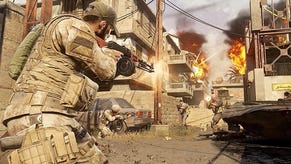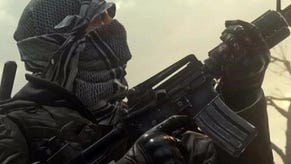Digital Foundry vs Call of Duty: Modern Warfare Remastered
Not so much a remaster - more a full-on remake.
The vast majority of remasters tend to deliver native 1080p visuals and a boost to frame-rates, but frequently offer up little else in terms of a graphical upgrade. However, Call of Duty: Modern Warfare Remastered is different, with developers Raven Software completely reworking the game's visuals for the current generation of console hardware. That means not only an increase in resolution, but also new assets, upgraded effects work, along with more dynamic camera work for the cutscenes. In that sense simply calling this latest version of Modern Warfare a remaster would be doing the game a disservice, when what we have here is a fully-fledged remake of a title that defined the last generation of first-person shooters.
Of course, we're still looking at the same core game, with level design and gameplay quirks remaining identical to the original, but at the same time, the visual boost certainly delivers a more immersive experience compared to the original game. This is immediately clear the moment we step outside the hangar in the opening training mission, where the combination of increased resolution and graphical complexity showcases just how much has changed in the remaster. Here, we are looking at the PS4 version (thanks to early access to the campaign) which hands in a native 1080p presentation that comfortably eclipses the soft 1024x600 image on the Xbox 360 original.
As to be expected, this provides a huge boost in overall image quality, although the increase in pixel count is arguably one of the least important upgrades of the remaster given the dramatic changes in other areas. Take the opening base camp area, which is now fleshed out in the remaster with more vehicles on-screen and extra set-pieces such as other recruits running around outside, along with tanks driving by as you head over to the next waypoint. Weather and lighting conditions are much darker, delivering a more authentic feel to the British landscape, while the busier nature of the stage helps to bring more life to the world over the somewhat sterile original game. This is a trend that continues all throughout the new game, transforming every location, vehicle, and characters in some way.
Close-ups of the main characters during cut-scenes reveal a generational leap in both geometry complexity and effects work over the original game. Elements such as additional pouches on clothing are constructed from high levels of geometry, as are granular details across weaponry, which appear much more defined. A similar overhaul is also applied to the environments too, where a combination of increased geometry, new textures, and reworked normal maps produce substantially more detailed locations in which stage the game hectic firefights and other dramatic moments. New shader effects also lead to more realistic looking surfaces across characters and scenery too, though these are quite up to the same standards as in Advanced Warfare or Black Ops 3, but do come reasonably close at times.
In many areas, vehicle and object placement has also been changed slightly in order to better convey the sense of war-torn landscapes, so things like food carts lining the middle eastern streets now appear partially broken in the remaster, while burnt out cars are placed at a slightly more askew angle. Extra debris is scattered across the road, while in rural locations muddy paths feature more detail in the form of normal maps that recreate tyre tracks and other distortions in the surface. These are relatively minor changes in the grand scheme of things, but do help to alter the look of the game, and in many instances the changes appear natural and work very well. It also highlights the attention to detail in the new game.
Lighting and effects work also see a dramatic upgrade, which is used to create a darker, grimier look to the game as a while. During outdoor night-time scenes, the extra darkness adds more atmosphere to these areas, though the changes don't always work so well across the entire game. The iconic tanker stage arguably looks more realistic in the original, with its lighter grey hues once exploring the interior. Similarly, the middle-eastern desserts appear brighter and more striking in The Coup sequence in the original, though the same scene features better colour saturation and depth in the remaster, along with more pronounced HDR lighting effects.
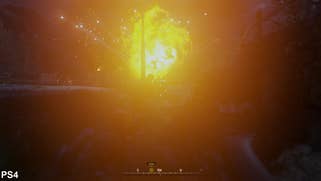
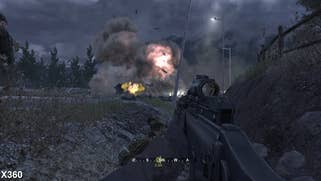
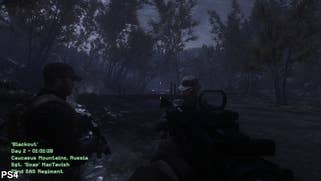

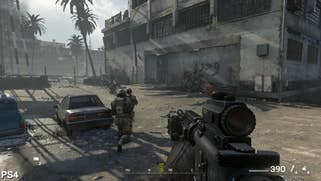

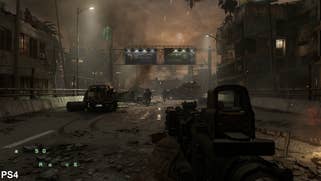

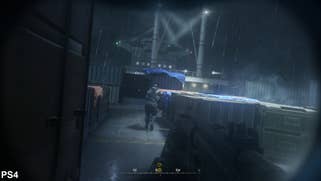


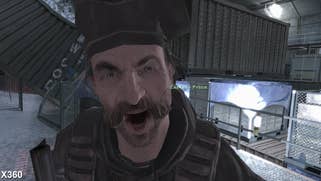
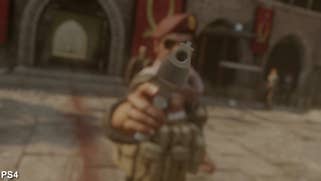

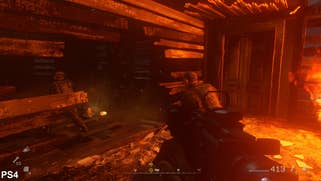
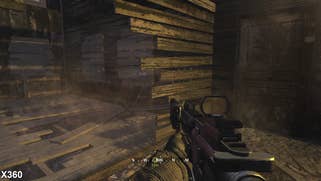
In fact, there are far more light sources in play in the remaster, which deliver more dynamic range to every scene. Elements such as buildings engulfed in flames, explosions, and flares erupting in the night sky feature a more saturated, punchier look, adding extra intensity to mementos when these come into play. Meanwhile explosions benefit from an increase in particles and lighting, along with volumetric effects which add a distinct glow to these elements. Other nice touches include particle physics, wind simulation, motion blur and improved depth of field, though curiously, smoke appears to be pared back over the original. While the new effect animates to a more realistic standard and has more depth, there is often less of it in several scenes.
Across the entire game, the upgrade is palpable and clearly brings Call of Duty 4 up to date with its modern sequels. While not all aspects of the presentation are quite in line with the series' newest games, moving over from last-gen instalments like Black Ops 2 and the generation gap can certainly be felt. Impressively, performance hasn't suffered from the boost in graphical quality, with frame-rates sticking closely to 60fps throughout most of the game.
Action-heavy moments with liberal use of alpha effects and lighting see frame-rates mildly hit, with drips into the low 50s or high 40s in select scenes, though this rarely distracts from the overall experience. The engine soon recovers and a locked 60fps update is quickly re-established. This leads to a real sense of solidity to motion and fluidity in the game, which is further backed up by the complete lack of tearing.
Infinite Warfare may be this year's blockbuster Call of Duty title, but upon sampling this remaster it's easy to see why many fans are perhaps more excited to return to the original Modern Warfare once more. The gameplay here remains pretty much unchanged from the original release, boasting a more grounded feel compared to its sequels with more realistic set-pieces and a decent amount of variety in mission design for a Call of Duty game. It certainly doesn't feel as epic as later installments, however, the huge graphical upgrade helps to bridge the gap rather well from a visual point of view, with additional flare added to set-pieces and basic effects work.
In that respect Raven software has successfully brought Call of Duty 4 to current-generation standards with this remaster, and the results are very good indeed. The use of new assets and effects work helps to add more atmosphere and immersion to the familiar Modern Warfare experience, while the core gameplay remains highly playable. The result is something of a lower key campaign where bombastic moments are more restrained, and where mission variety and a more sedate pace creates a very different tone to today's over the top Call of Duty games. It's a nice change from a constant Michael Bay-esque bombardment, though some of the more elaborate scenes in the original Modern Warfare don't have the same impact they once did.
The real takeaway here is that remasters can still provide a great experience that can still hold up to newer, more elaborate franchise titles when done right. In this case, the decision to remake Call of Duty 4 was certainly the right one, and while the gameplay can feel somewhat dated at times, the experience is definitely one worth revisiting, and is easily a class above the basic remastering effort we so often see. Hopefully, the game's popularity will lead to some of the sequels receiving the same treatment, but until then Modern Warfare: Remastered is well worth checking out. It's just a shame that Activision is using the game to push sales of Infinite Warfare, when the content here is good enough to stand on its own.





